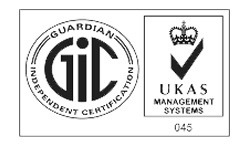Welding Rod Quality Control is a vital part of the welding rod production process. It starts with choosing the right materials and ends with careful checks to make sure every rod meets safety and strength standards. In this article, we will explore the importance of quality control, the steps involved, and how simple, clear practices help ensure that welding rods are strong and reliable.
What Is Welding Rod Quality Control?
Welding rod quality control means checking each step of making welding rods to ensure they are safe and work as expected. It involves looking at the materials, the production process, and the final product. Every rod must be free of flaws because even a small mistake can lead to weak welds that may fail during use.
Quality control is not just about testing the finished product. It is a process that starts from the beginning, when raw materials are selected. This approach helps catch problems early, making the production process smoother and reducing waste.
Why Quality Control Matters
Quality control in welding rod production plays a key role in building safe and durable structures. When welding rods are tested carefully, they form strong bonds between metal parts. This is essential in construction, automotive work, and other fields where safety is important. Here are some reasons why quality control matters:
Safety: Strong welds keep buildings and machines safe. Poor quality rods can lead to weld failures, which may cause accidents.
Durability: When quality control is done right, welding rods last longer. This means repairs and replacements are less frequent.
Efficiency: A consistent production process means less waste and lower production costs. It also leads to fewer delays in manufacturing.
Trust: Customers who know a company focuses on quality are more likely to trust the products.
Steps in the Quality Control Process
The process of quality control in welding rod production is made up of several clear steps. Each step is designed to catch issues early so that the final product is reliable.
- Raw Material Inspection
Before production begins, raw materials such as metal powders and binders are checked. This step ensures that only the best materials are used. Any material that does not meet the set standards is rejected or reprocessed.
- Monitoring the Production Process
Once the materials are approved, the production process starts. During production, machines mix, shape, and form the welding rods. Simple and regular checks are done at various stages to ensure that the process stays on track. If a problem is detected, it is corrected immediately.
- Testing the Final Product
After the welding rods are produced, they undergo a series of tests. These tests may include:
Visual Inspection: Workers check the rods for any visible defects.
Mechanical Testing: Rods are tested under pressure and heat to see if they can withstand the conditions in real use.
Chemical Analysis: Samples of the rods are taken to check that the material composition is correct.
- Adjustments and Record Keeping
When any issues are found during testing, adjustments are made. Workers and managers record the results of tests and any changes made. Keeping detailed records helps maintain a high standard over time and shows where improvements might be needed.
Common Tests in Welding Rod Quality Control

Several tests are commonly used to check the quality of welding rods. These tests are simple yet effective in ensuring that every rod performs well when used in a weld. Some of these tests include:
Bending Tests: These tests check if the rod can bend without breaking, which is important when it is used in welding.
Heat Resistance Tests: Welding rods must resist high temperatures. These tests ensure that the rods do not fail when exposed to heat.
Chemical Composition Tests: By analyzing the chemical makeup, technicians ensure that the rod has the correct mix of metals and other elements.
These tests are done using standard methods that are easy to follow and understand, making sure that the quality control process is consistent across all production batches.
Benefits of Strong Quality Control
When companies put strong quality control measures in place, everyone wins. Here are some of the benefits:
Reduced Waste: By catching errors early, there is less need to scrap or redo products.
Cost Savings: A smooth production process that avoids errors helps keep costs down.
Increased Safety: Reliable welding rods contribute to safer work environments and stronger structures.
Better Performance: Consistently high-quality welding rods result in better welds, which are essential for long-lasting repairs and constructions.
Challenges and How to Overcome Them
Even with a simple process, there are challenges in maintaining quality control. Variations in raw materials, changes in machine performance, and human error can all affect the outcome. To deal with these challenges, companies focus on:
Regular Training: Workers are given clear instructions and ongoing training so they know exactly what to do.
Routine Inspections: Frequent checks during production help spot problems quickly.
Simple, Clear Procedures: Keeping instructions and steps clear helps everyone understand the process, reducing the risk of mistakes.
Best Practices for Quality Control

The best practices in welding rod quality control are simple and clear. Here are some tips that many companies follow:
Consistent Checks: Regular checks at every stage of production help maintain a steady quality level.
Clear Records: Keeping detailed records of tests and adjustments provides a reference for future improvements.
Open Communication: When a problem is spotted, workers discuss it openly so that the solution can be found quickly.
Simple Technology: Using straightforward tools to monitor and test the rods ensures that the process is easy to follow and reliable.
The Future of Welding Rod Quality Control
Looking ahead, the methods used in quality control for welding rods are expected to become even more efficient. Technology is slowly making its way into these processes, offering tools that can gather data more accurately. However, the heart of quality control remains simple practices that have proven effective over time.
Companies are exploring ways to use basic digital tools to record data and spot trends over time. This additional data can help them understand where small improvements might make a big difference. Even with new technology, the focus remains on simple, clear procedures that everyone can follow.
Welding Rod Quality Control is more than just a series of tests; it is a continuous process that ensures the safety, durability, and efficiency of welding rods. By starting with the best raw materials and checking each step of production, companies can produce welding rods that meet high standards. Simple and clear practices lead to better products that support many everyday tasks, from building structures to repairing equipment.
The art of quality control in welding rods shows how small, careful steps can lead to significant improvements in product safety and reliability. With ongoing attention to detail and the use of simple procedures, the process will continue to support safe and durable constructions. As companies look to the future, they will continue to focus on methods that are both effective and easy to follow, ensuring that every welding rod produced is of the highest quality.



